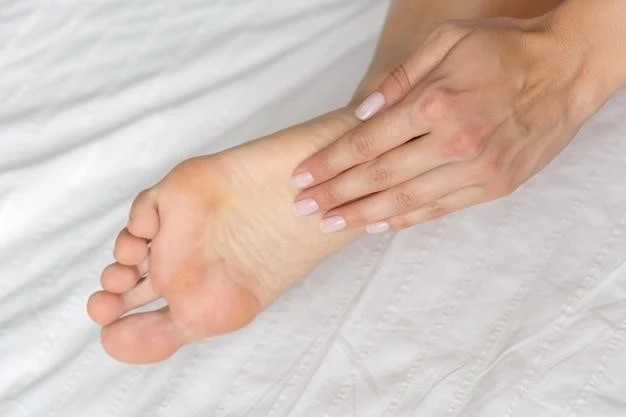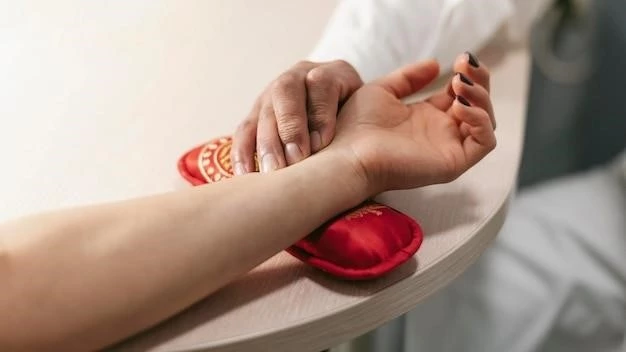Causes of Anonychia Ectrodactyly
Understanding the genetic mutations and environmental factors contributing to this condition․
Genetic Mutations
Genetic mutations play a key role in Anonychia Ectrodactyly development․ Variations in specific genes can lead to nail and limb abnormalities․ Understanding these genetic changes is crucial for diagnosis and potential future treatments․ Consult with a genetics specialist for comprehensive evaluation and guidance․
Environmental Factors
While genetic mutations are primary causes of Anonychia Ectrodactyly, environmental factors can also play a role․ Chemical exposures, infections, or other external influences during fetal development may contribute to the condition․ Minimizing exposure to potential risk factors is advisable during pregnancy․ Consult with healthcare providers for guidance on environmental risk reduction․
Symptoms of Anonychia Ectrodactyly
Manifestations include absence of nails and split/cleft hand or foot deformities․ Seek medical evaluation․
Absence of Nails
Anonychia Ectrodactyly commonly presents with the complete absence of nails on affected fingers or toes․ This visible symptom can impact both aesthetics and functionality․ It is essential to consult with a healthcare provider for proper assessment and management options tailored to individual needs․
Split or Cleft Hand/Foot
In Anonychia Ectrodactyly, individuals may exhibit split or cleft deformities in the hand or foot, causing functional challenges and potential discomfort․ Prompt evaluation by a healthcare professional is crucial to discuss personalized treatment options and support for addressing these physical abnormalities effectively․ Seek specialized care for proper management․
Treatment Options for Anonychia Ectrodactyly
Explore surgical interventions and prosthetics/orthotics for managing the condition effectively․
Surgical Interventions
Surgical procedures can help address nail and limb abnormalities in Anonychia Ectrodactyly․ Consult with a skilled healthcare team to discuss the possibility of corrective surgeries tailored to individual needs․ Surgical interventions aim to improve function and appearance, enhancing quality of life for those affected by this condition․
Prosthetics and Orthotics
Prosthetic devices and orthotic interventions can aid individuals with Anonychia Ectrodactyly in improving hand or foot function and enhancing overall mobility․ Collaborate with healthcare professionals specializing in prosthetics and orthotics to explore custom solutions that support daily activities and provide comfort․ These assistive tools can significantly benefit individuals living with this condition․
Anonychia Ectrodactyly⁚ Diagnosis and Prognosis
Timely diagnostic tests and understanding prognosis are crucial for effective management․
Diagnostic Tests
Diagnosis of Anonychia Ectrodactyly may involve genetic testing, imaging studies, and physical examinations to assess nail and limb abnormalities․ Consult with healthcare specialists for comprehensive evaluations to confirm the condition․ Early and accurate diagnosis through a multidisciplinary approach is essential for developing personalized treatment plans and addressing associated concerns effectively․
Prognosis and Outlook
The prognosis of Anonychia Ectrodactyly varies based on individual cases․ With advancements in medical care and support, individuals can lead fulfilling lives․ Regular follow-ups, adherence to treatment plans, and accessing appropriate resources can positively impact the outlook․ Seek ongoing guidance from healthcare professionals to optimize management and quality of life for those affected by this condition․
Genetic Factors in Anonychia Ectrodactyly
Understanding inheritance patterns and genetic counseling is crucial in managing this condition․
Inheritance Patterns
Anonychia Ectrodactyly may follow various inheritance patterns, including autosomal dominant, autosomal recessive, or X-linked․ Understanding the genetic basis can help assess familial risks and provide insights into the likelihood of the condition in future generations․ Genetic testing and counseling can aid in informed family planning decisions and proactive management․
Genetic Counseling
Genetic counseling is vital for individuals and families affected by Anonychia Ectrodactyly․ Genetic counselors can provide personalized information about the condition, inheritance risks, and available testing options․ They offer guidance on family planning, psychological support, and help patients make informed decisions concerning genetic aspects․ Seek the expertise of genetic counselors to navigate the complexities associated with Anonychia Ectrodactyly․
Living with Anonychia Ectrodactyly⁚ Tips and Support
Discover adaptive strategies and support resources for enhancing daily life with this condition․
Adaptive Strategies
Implementing adaptive strategies can aid in overcoming challenges associated with Anonychia Ectrodactyly․ Explore assistive devices, modified techniques, and ergonomic tools to improve independence and function․ Occupational therapy can provide personalized guidance on adapting activities of daily living to suit individual needs․ Embracing adaptive strategies empowers individuals to navigate daily tasks with confidence and ease․
Support Resources
Accessing support resources can greatly benefit individuals living with Anonychia Ectrodactyly․ Connect with patient advocacy groups, specialized healthcare professionals, and online communities for valuable information and emotional support․ These resources offer a platform for sharing experiences, finding guidance on care management, and fostering a supportive network․ Utilize support resources to enhance overall well-being and adapt to life with Anonychia Ectrodactyly․
Anonychia Ectrodactyly in Children
Learn about early intervention and developmental milestones for children with this condition․
Early Intervention
Early intervention is crucial for children with Anonychia Ectrodactyly to promote optimal development․ Timely access to medical specialists, occupational therapy, and educational support can aid in addressing unique needs and enhancing skills․ Collaborate with a multidisciplinary team to create a tailored early intervention plan that focuses on maximizing the child’s abilities and fostering independence․
Developmental Milestones
Tracking developmental milestones in children with Anonychia Ectrodactyly is essential for monitoring progress and addressing potential delays․ Collaborate with healthcare providers to create an individualized developmental roadmap․ Celebrate achievements and seek early intervention if delays are observed․ Understanding and supporting developmental milestones can empower children to reach their full potential and thrive despite challenges․

Research Advances in Anonychia Ectrodactyly
Stay updated on current studies exploring new insights and potential breakthroughs for this condition․
Current Studies
Ongoing research studies are investigating new treatment modalities and genetic mechanisms underlying Anonychia Ectrodactyly․ Participating in clinical trials or research initiatives can contribute to advancements in understanding and managing the condition․ Stay informed about current studies to explore potential options and contribute to the progress of Anonychia Ectrodactyly research․ Consult healthcare professionals for guidance on involvement in relevant research endeavors․
